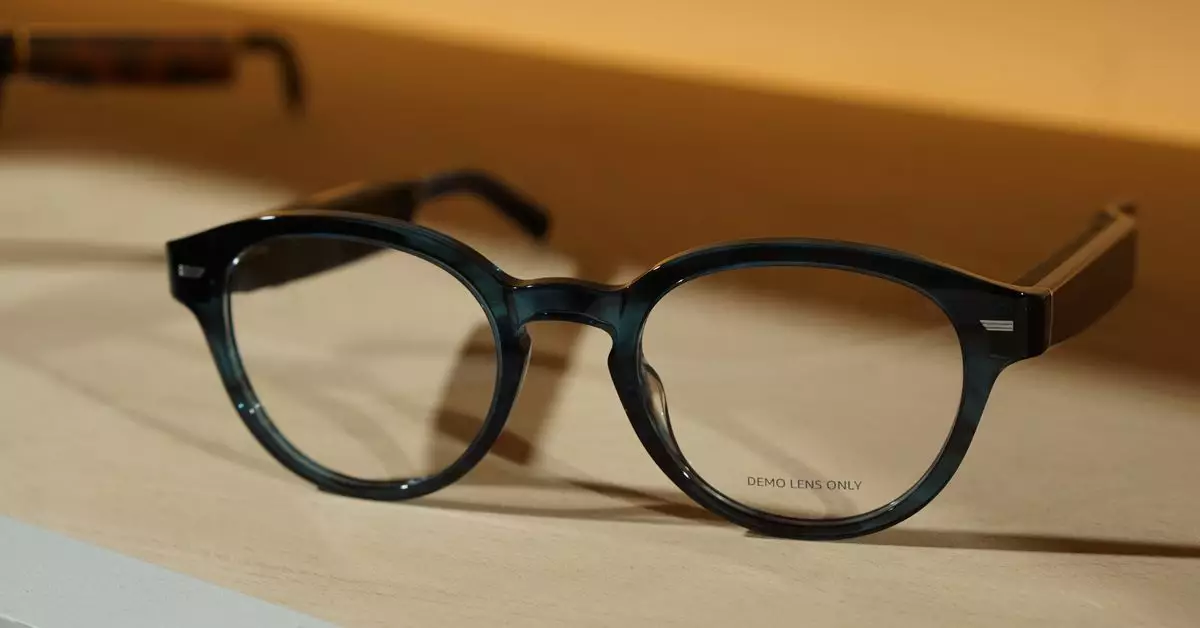The ever-growing demand for quick and efficient delivery services has spurred companies to innovate continuously. Amazon, a giant in the e-commerce landscape, is reportedly venturing into the development of smart glasses designed specifically for their delivery drivers. According to reports from Reuters, these glasses might revolutionize the way deliveries are executed, enhancing efficiency in what is referred to as the last 100 yards of delivery routes. This initiative is not just a trivial update; it represents a significant leap towards integrating wearable technology into everyday logistics.
Codenamed “Amelia,” Amazon’s project aims to provide drivers with turn-by-turn directions through an embedded display in smart glasses, a departure from the conventional audio prompts used in existing Echo Frames. This advancement could have substantial implications for delivery times, as it allows drivers to follow precise directions without needing to stop to consult a device or a paper map. Imagine the potential of visual instructions guiding drivers as they navigate complex environments, such as apartment buildings or busy urban streets.
Moreover, this technology could enable features that include visual indicators for post-delivery tasks, like photographing packages for proof of delivery. Such enhancements could not only streamline processes but also reduce the odds of errors that can occur during last-minute adjustments while making deliveries.
Despite the optimism surrounding this technology, significant hurdles remain before these smart glasses become a reality for Amazon drivers. One classic issue with developing smart eyewear is engineering a battery powerful enough to last an entire work shift while keeping the device light and comfortable. The challenge lies in striking a balance between functionality and practicality—something that has historically plagued many tech companies attempting to merge augmented reality (AR) with eyewear.
Another important factor that cannot be overlooked is the existing landscape of corrective lenses. Many potential users already rely on prescription glasses, and the current generation of smart glasses does not always cater to diverse vision needs. This presents a critical barrier to widespread adoption that Amazon will need to address forthrightly.
Integrating any new technology also requires buy-in from the users themselves. A significant portion of Amazon’s delivery workforce consists of independent contractors rather than full-time employees, presenting additional challenges for uniform technology adoption. These drivers must understand the benefits of smart glasses over traditional methods, and Amazon will need to invest in training and support to ensure efficacy.
The road to adopting smart glasses is not paved with certainty. For starters, Amazon will need to compile extensive data about popular delivery locales to validate the effectiveness of this technological leap. Navigating this final stretch of delivery—characterized by unique building layouts and varying neighborhood infrastructures—will require meticulous planning and a robust data-gathering phase.
The Broader Vision: Beyond In-House Usage
Interestingly, Amazon’s exploration of this technology signifies a trend observed in the tech industry: the shift towards enterprise solutions for augmented reality. Many companies, including Google and Microsoft, have pivoted their AR offerings towards business applications after consumer products saw disappointing sales. It remains to be seen whether Amazon will limit this smart glasses initiative to their delivery operations or explore opportunities to license the technology for broader commercial use.
With the failure of the previous generation of Echo Frames—reportedly selling fewer than 10,000 units compared to the success of rivals like Ray-Ban Meta glasses—it may be time for Amazon to reassess its strategy. If done right, the intelligent integration of AR technology could not only enhance delivery efficiency but also pave the way for future consumer applications.
Amazon’s initiative to develop smart glasses for their delivery drivers, while ambitious, is fraught with challenges that will take time, research, and innovation to address. As the industry looks to the future, the actual effectiveness of the Amelia project will depend significantly on engineering solutions, user adoption, and data-driven insights. Should Amazon navigate these hurdles successfully, it could set a transformative precedence in logistics and delivery methods, elevating both driver experience and service efficiency in an increasingly competitive landscape.

